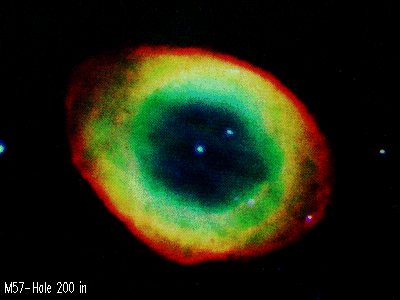 COURSE OFFERINGS
COURSE OFFERINGS
by
Professor George E. McCluskey, Jr., Ph.D. (Division Head) and Professor
Gary G. de Leo, Ph.D. |
Astr 007
= Phys 007 |
Introduction to Astronomy |
3 credits |
fall semester |
|
Introduction to planetary, stellar, galactic, and extragalactic astronomy.
An examination of the surface characteristics, atmospheres,
and motions of planets and other bodies in our solar system.
Properties of the sun, stars, and galaxies, including the birth and
death of stars, stellar explosions, and the formation of stellar remnants
such as white dwarfs, neutron stars, pulsars, and black holes.
Quasars, cosmology, and the evolution of the universe. |
|
May not be taken by students who have completed Astr 105, 201, or
202. (NS) |
|
INSTRUCTORS: |
Astr 008
= Phys 008 |
Introduction to Astronomy Laboratory |
1 credits |
fall semester |
|
Laboratory to accompany Astro 007 = Phys 007. |
|
INSTRUCTORS: |
Astr 105
= EES 105
= Phys 105 |
Planetary Astronomy |
4 credits |
fall semester |
|
Structure and dynamics of planetary interiors, surfaces, and atmospheres.
Models for the formation of the solar system and planetary
evolution. Internal structure, surface topology, and composition
of planets and other bodies in our solar system. Comparative
study of planetary atmospheres. Organic materials in the solar
system. Properties of the interplanetary medium, including
dust and meteoroids. Orbital dynamics. Extrasolar planetary
systems. |
|
PREREQUISITES: Phy 011 and EES 021, or department
permission. (NS) |
|
INSTRUCTORS: |
Astr 110
= Phys 110 |
Methods of Observational Astronomy |
1 credit |
spring semester |
|
Techniques of astronomical observation, data reduction, and analysis.
Photometry, spectroscopy, CCD imaging, and interferometry.
Computational analysis. Examination of ground-based
and spacecraft instrumentation, and data transmission, reduction,
and analysis. (NS) |
|
INSTRUCTORS: |
Astr 201
= Phys 201 |
Modern Astrophysics I |
4 credits |
fall semester |
|
Physics of stellar atmospheres and interiors, and the formation, evolution,
and death of stars. Variable stars. The evolution of
binary star systems. Novae, supernovae, white dwarfs, neutron
stars, pulsars, and black holes. Stellar spectra, chemical
compositions, and thermodynamic processes. Thermonuclear reactions.
Interstellar medium. |
|
PREREQUISITES: Math 022 or 052; Phys 011 and 021.
(NS) |
|
INSTRUCTORS: |
Astr 202
= Phys 202 |
Modern Astrophysics II |
4 credits |
spring semester |
|
The Milky Way Galaxy, galactic morphology, and evolutionary processes.
Active galaxies and quasars. Observed properties of
the universe. Relativistic cosmology, and the origin, evolution
and fate of the universe. Elements of General Relativity and
associated phenomena. |
|
PREREQUISITES: Math 022 or 052; Phys 011 and 021.
(NS) |
|
INSTRUCTORS: |
Astr 332
= Phys 332 |
High-Energy Astrophysics |
3 credits |
spring semester, odd-numbered year |
|
Observation and theory of X-ray and gamma-ray sources, quasars, pulsars,
radio galaxies, neutron stars, black holes. Results from ultraviolet,
X-ray and gamma ray satellites. |
PREREQUISITES: Math 023 or 033 or 052
CONCURRENT: Phy 021 (NS) |
|
INSTRUCTORS: |
Astr 342
= Phys 342 |
Relativity and Cosmology |
3 credits |
spring semester, even-numbered year |
|
Special and general relativity. Schwarzschild and Kerr black
holes. Supermassive stars. Relativistic theories of
the origin and evolution of the universe. |
PREREQUISITES: Math 023 or 033 or 052
CONCURRENT: Phy 021 (NS) |
|
INSTRUCTORS: |
|
Astr 350 |
Topics in Astrophysics |
3 credits |
fall & spring semesters |
|
For science or engineering majors who desire to study an active area
of research in astrophysics. Individual supervision.
|
PREREQUISITES: Astr 201; Math 023 or 033; Phys 021.
May be repeated for credit with the consent of the division head.
|
|
INSTRUCTORS: |
|
 cgm0@lehigh.edu
cgm0@lehigh.edu
 cgm0@lehigh.edu
cgm0@lehigh.edu